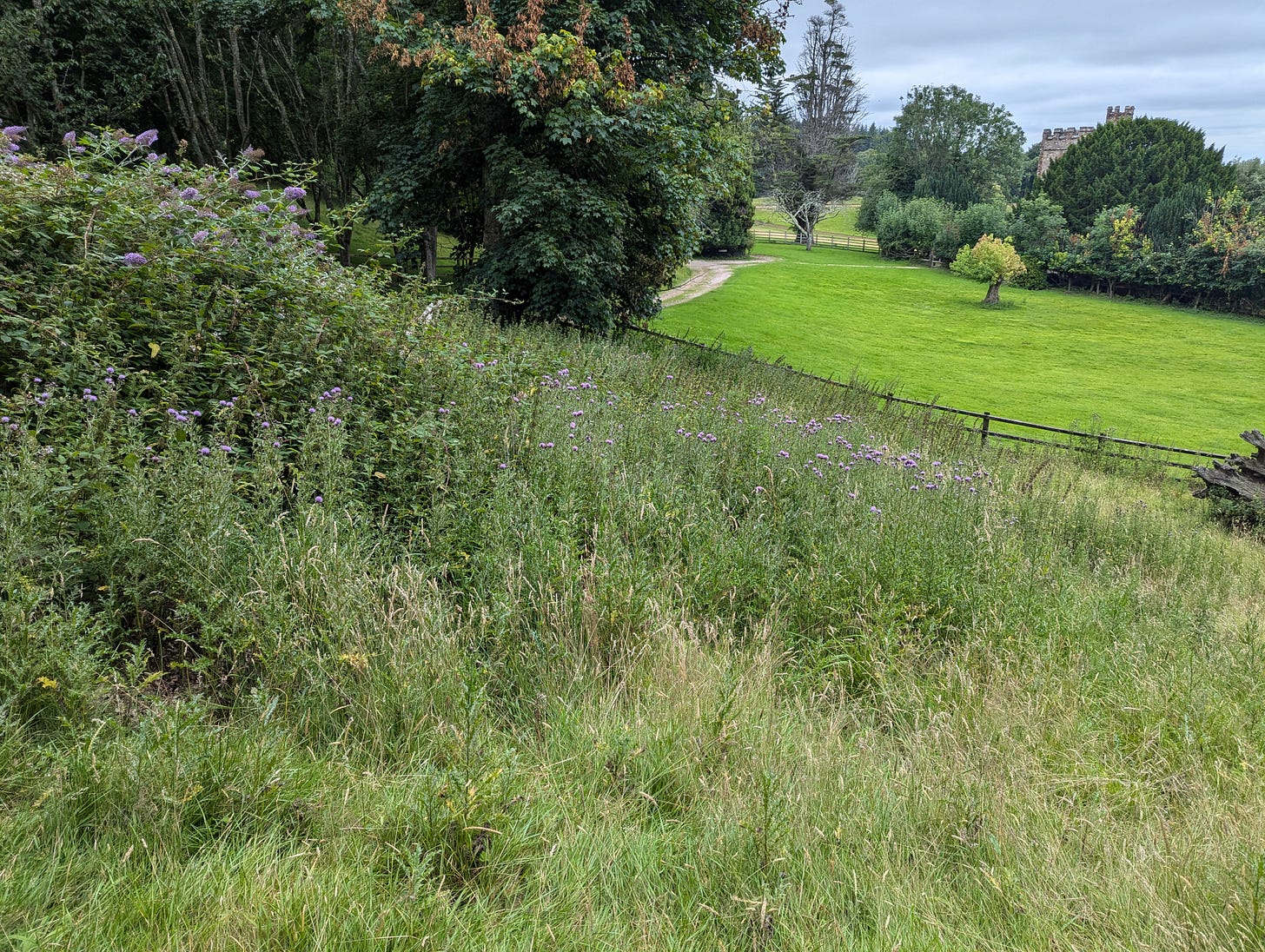How to Handle Thistle in Rewilding, and Why it Matters.
We discuss the importance of thistle, its advantages and shortcomings, and how we handle it in our rewilding projects.
Rewilding, focused on the goal of restoring ecosystems to their natural states, often involves the reintroduction of native plant species that can bolster biodiversity and ecosystem health. One such plant that plays a controversial role in rewilding projects is thistle. While often perceived as a nuisance weed, thistles offer significant ecological benefits. However, their management must be carefully balanced due to potential drawbacks.
Advantages of Thistle in Rewilding
Biodiversity Enhancement : Thistles, particularly native species, significantly enhance biodiversity. They offer a critical source of nectar for pollinators such as bees, butterflies, and other insects. Pollinators, in turn, support a wide range of plant species by facilitating cross-pollination. Additionally, thistle seeds are a vital food source for many bird species, including finches and sparrows, which aids in sustaining bird populations in rewilded areas. We've seen this in various LettsSafari rewilding parks at Exeter's Capability Brown Gardens, where in summer months the soundscape is captured with buzzing insects and birdsong.
Soil Health Improvement: Thistles have deep taproots that penetrate compacted soils, promoting aeration and water infiltration. This root system can help improve soil structure and fertility over time. By breaking up hard soil layers, thistles also make it easier for other plants to establish themselves, promoting a more diverse plant community. By breaking down the soil, they also contribute to the carbon cycle. This ensures the quality of the soil to serve as an effective store for carbon sequestration.
Habitat Creation: The dense foliage and structure of thistle plants offer excellent cover for small mammals and insects, providing them with protection from predators. This creates a micro habitat that supports various life forms, contributing to the overall ecological complexity of rewilding sites. In rewilding, this means that Thistles become essential in establishing important wild scrub, one of the key macro habitats in any advanced rewilding project.

Disadvantages of Thistle in Rewilding
Keep reading with a 7-day free trial
Subscribe to LettsSafari+ to keep reading this post and get 7 days of free access to the full post archives.



